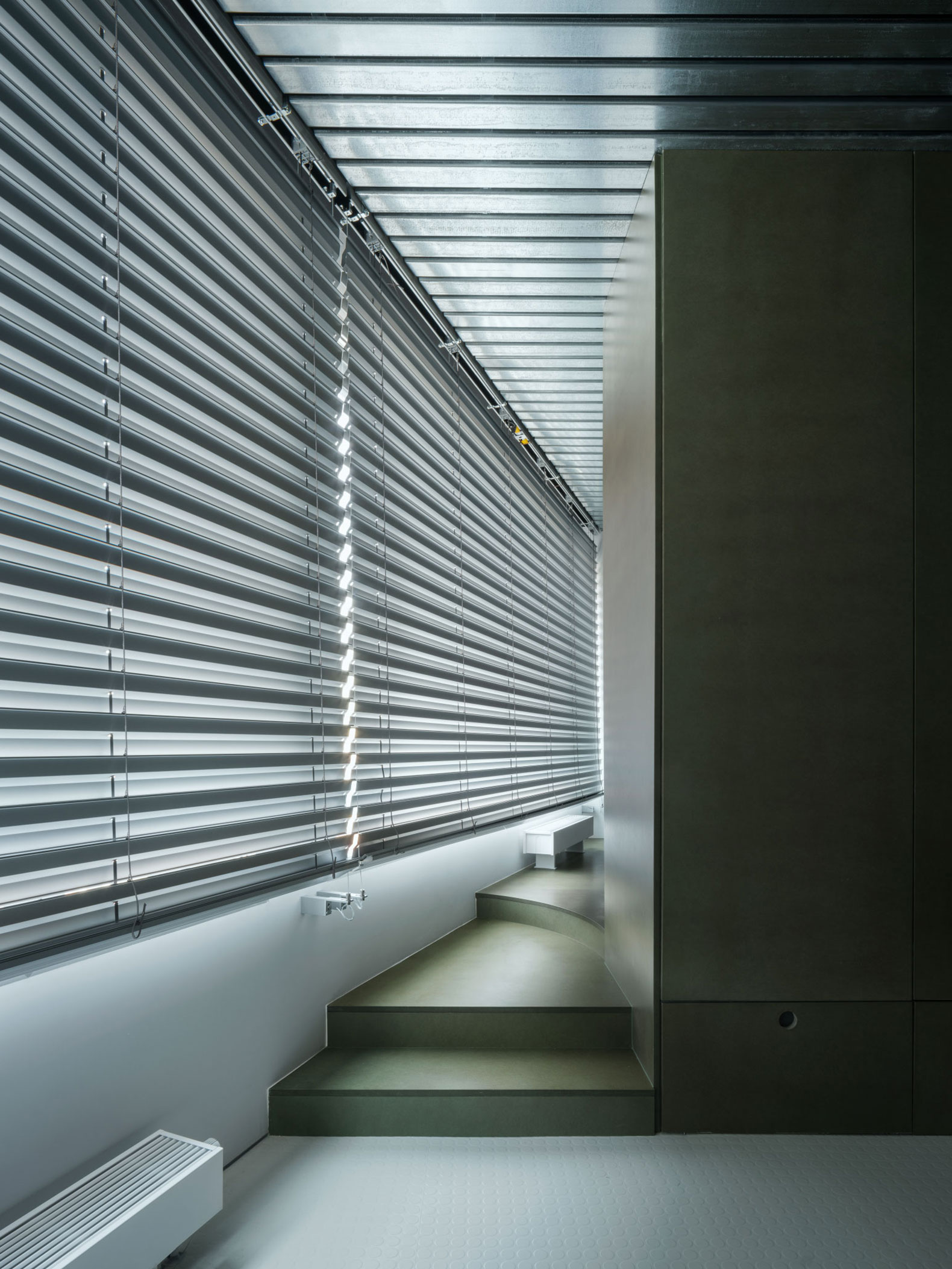
Hanghar invites us to contemplate the possibilities that the use of materials from other industries has in the production of new domestic realities by carrying out a renovation that turns the interior of an apartment into a closet-room, a place that is compressed into a minimal structure closer to a piece of furniture than a room.
Using materials that reflect light, amplifying the space, the apartment is intervened, leaving free a part that stops containing the idea of intimacy to open itself aseptically to anything that happens in it, containing a series of elements that reveal what they carry, allowing us to understand the function of each space.

Studiolo by Hanghar. Photograph by Luis Díaz Díaz.
Project description by Hanghar
Studiolo is an investigation into the idea of the private room. The concept of a room, while seemingly ubiquitous in architecture, is often taken for granted in both our everyday lives and architectural endeavours. As dwellers and architects, we inherently engage with rooms, crafting and inhabiting them without much contemplation. In essence, if architecture aims to shape space, then the room emerges as the most immediate manifestation of this endeavour.
The project consists of the renovation of an existing 1970s apartment located in Madrid. It overlooks a 19th-century convent, granting unobstructed views of the city’s skyline through its large windows.
The apartment’s original layout is emptied to introduce a new, autonomous piece inside: a deep green cabinet room resembling Italian 15th-century “studiolos” or study rooms. The Italian term “studiolo” refers to the private room that many Renaissance humanists had for retirement and thinking, for their dedication to intellectual research and art contemplation, a domestic space that emerges from reality and operates on the border with fiction. A place to retreat from the bustle of everyday life.

Constructed entirely of raw MDF, the studiolo is compressed into a tight, minimal structure, closer to a piece of furniture than to a room, freeing up the rest of the apartment into an empty, aseptic, open space ready for anything to happen in it.
The studiolo also holds the inhabitant’s possessions in a series of cabinets that disclose what they carry, such as kitchen appliances, technical panels, goods, or linen.
Materially speaking, the project is an exploration of the possibilities that the use of materials from other industries has in producing new domestic realities. The floor is covered in Pirelli rubber flooring, commonly found in industrial settings, while the ceiling is resolved with demountable galvanized steel profiles used in office spaces. Both materials reflect light, amplifying the space.






































































